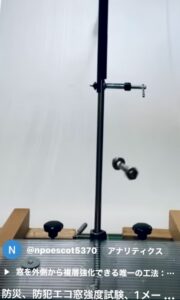Sea surface water cooling and CO2 capture: Wave upwelling pump, monitor sales start
Hypothesis and mechanism based on research findings obtained so far:
1. A high-temperature layer is formed at a depth of about 10 cm due to the infrared absorption properties of water.
2. The lid of this high-temperature layer exists almost all year round, limiting the amount of oxygen and CO2 that dissolves into seawater.
3. Meanwhile, in the Tororo, at a depth of about 3 m, there is water that is 2 to 3°C cooler than the sea surface.
4. The sea surface temperature can be lowered by diffusing this cold water onto the sea surface using the force of waves.
5. As a result, it is possible to physically increase the amount of CO2 absorbed by the ocean in a way that poses little risk to the ecosystem.
Wave upwelling pump explanation video → here
The rise in water temperature on the sea surface (or lake surface) creates a thin layer of 5 to 10 cm. The reason is due to the wavelength absorption characteristics of water…

A few meters below this lies a layer of cold water that is 2-3°C colder on average, and up to 8°C colder…
*In Katsuura, a maximum temperature difference of 8°C was confirmed between the sea surface and a depth of 8m, and low-temperature water layers were also confirmed during other periods.
Sea surface temperatures were high in 95.54% of the daily data. (Sea surface temperature > number of days with 8m water temperature ÷ 359 days)

Measures to prevent sea (lake) surface temperature rise reduce the risk of climate change…
Pumping and diffusing cold water from the lower layers is believed to prevent sea (lake) surface temperature rise, increase oxygen and CO2 absorption, and contribute to the recovery of fishery resources.
Measurements have confirmed that there is a difference in water temperature of about 2-3°C between depths of 0.3m and 2m during the day in summer.
By diffusing cold water from 2-3 meters below the ocean surface, it is possible to lower the sea surface temperature.
Wave upwelling pumps (ocean muddler) make this possible using only the up and down movement of waves and the power of wind.
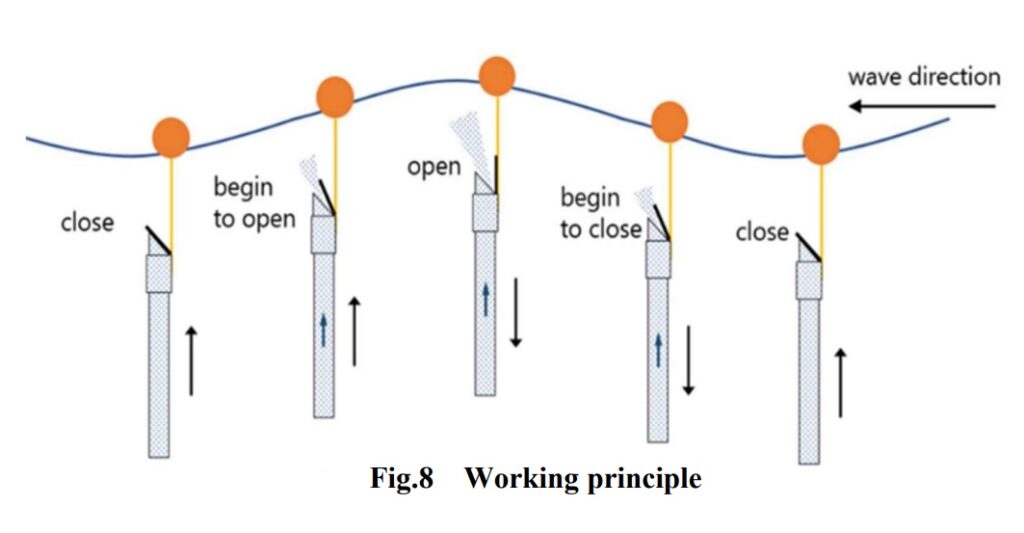
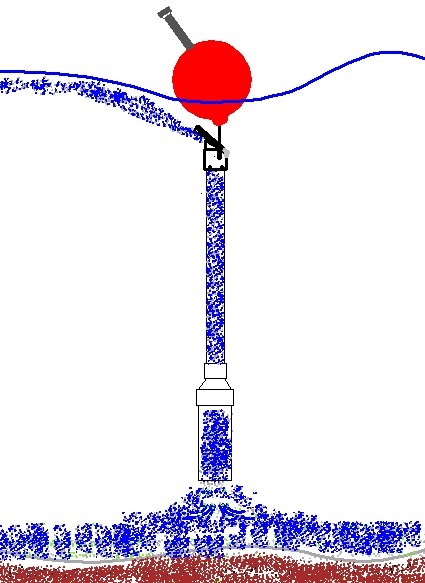
Sea surface temperatures rise rapidly during the day, releasing large amounts of water vapor. Pumping up low-lying cold water helps to suppress this rise…
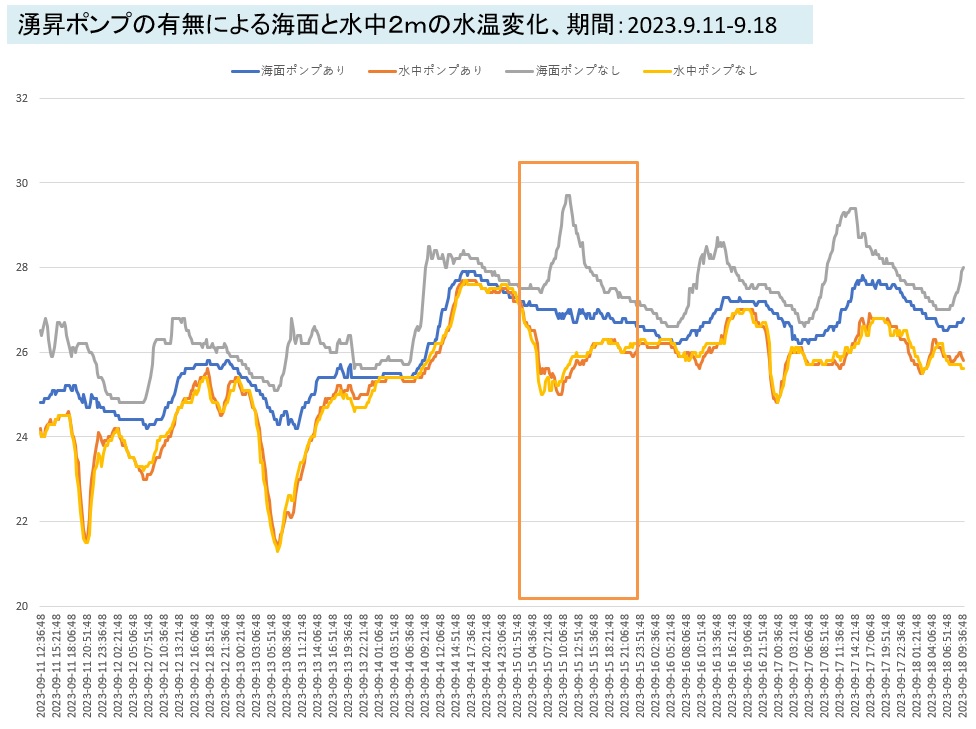

Possible effects of pumping low-lying cold water (upwelling)…
① If the sea surface temperature in the entire Tokyo Bay were to drop by 1℃, it would have an economic effect
of reducing air conditioning costs in the summer in the metropolitan area . ② Similarly, it would reduce the risk of heat stroke and have a disaster mitigation effect such as taking measures against sudden heavy rains. ③ The cooling of the water surface would have a CO2 capture effect
by increasing the amount of carbon dioxide in the atmosphere that dissolves into seawater. ④ Similarly, the increase in the amount of oxygen that dissolves into seawater would have an effect of preventing death by lack of oxygen in fish and shellfish.
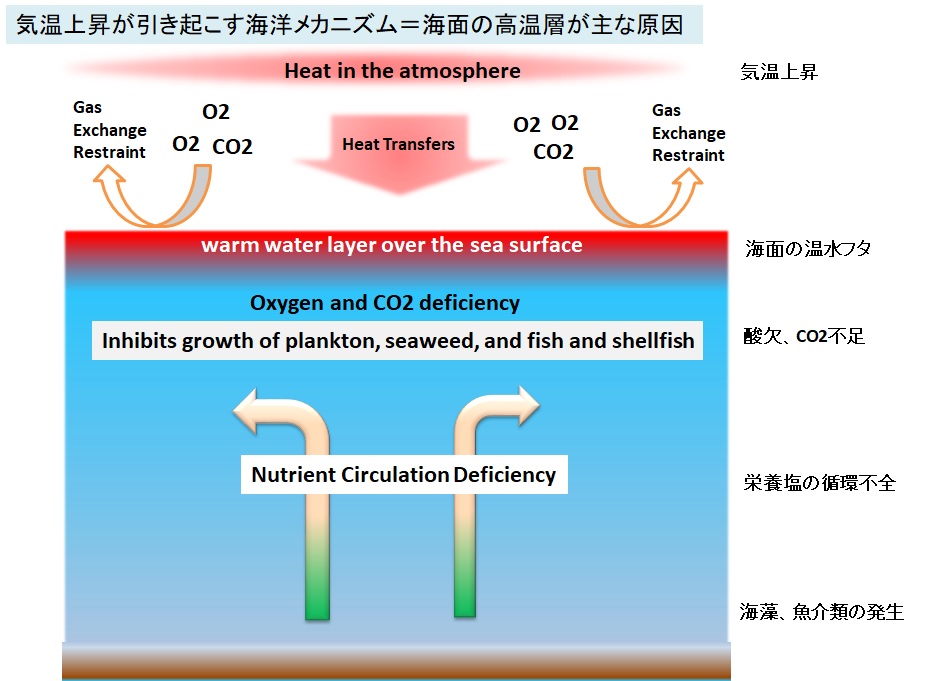
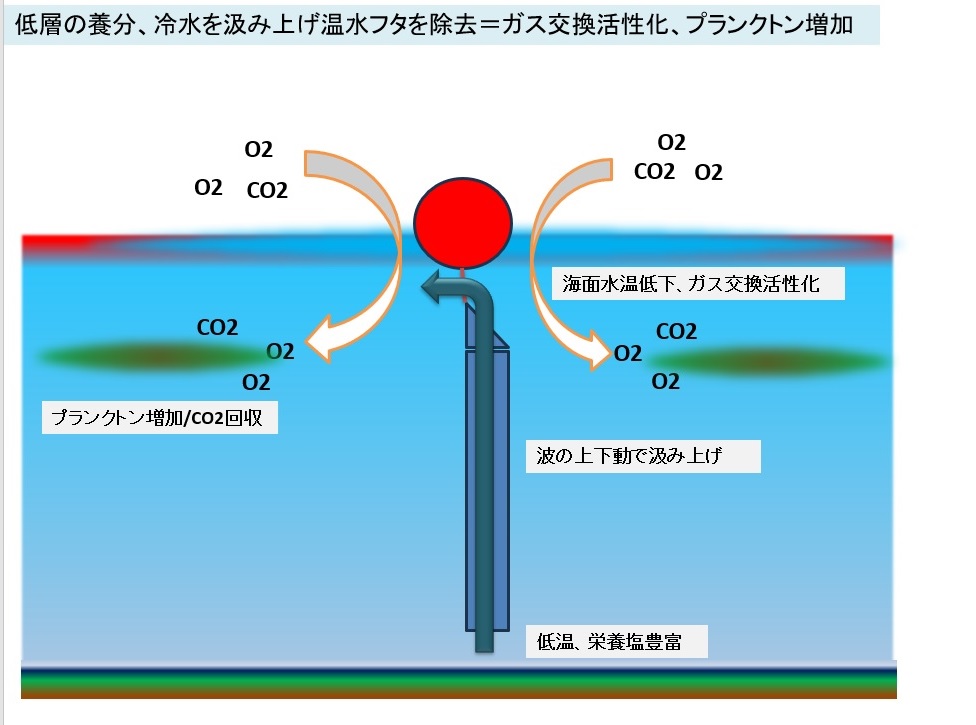
Ocean temperature and CO2 and O2 absorption: There is data that carbon dioxide increases by about 0.7 mol/m3 when the water temperature drops by 1°C.
The pumping and diffusion of low-level cold water also functions as a CO2 physical capture (DAC) device…
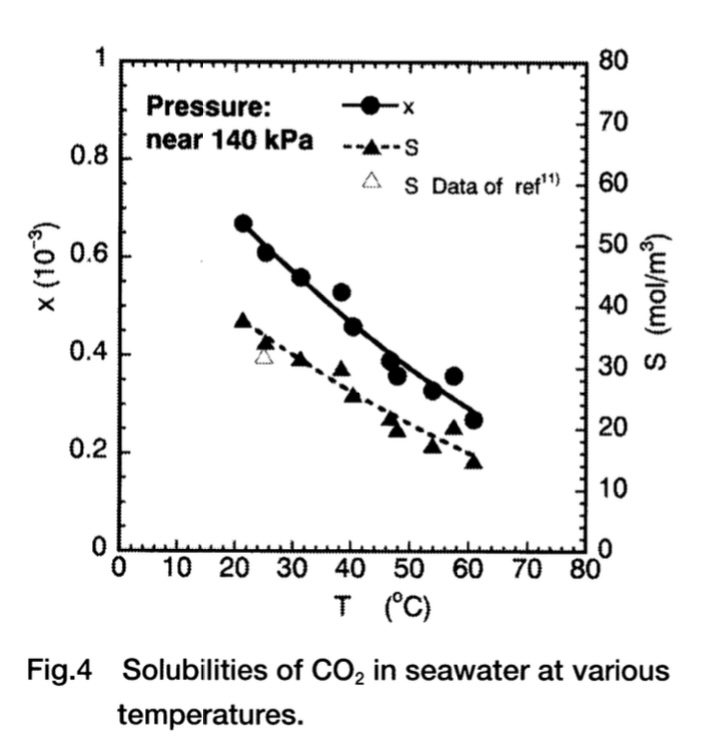
Source: Japan Institute of Marine Engineering, Vol. 39
“Basic research on carbon dioxide absorption by seawater”
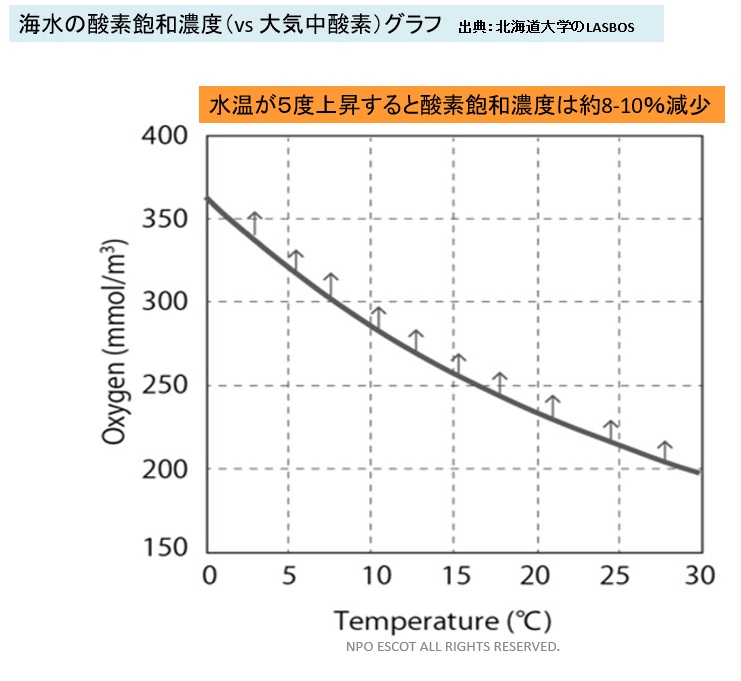
What is the current international development status of low-lying cold water pumping (upwelling) equipment as a measure against typhoons and hurricanes?
Research is also being conducted overseas on the technology of pumping up low-level cold seawater to suppress the development of hurricanes.
Below are some examples of companies and projects that are conducting related technology and research.
- Blue Planet Energy Solutionsis developing a technology to reduce the development of hurricanes by lowering ocean surface temperatures using ocean thermal management technology, which uses giant pumps to pump cold, deep water to the surface.
- The AtmoceanOcean Pumping System harnesses wave energy to pump cold, deep water to the surface, aiming to reduce the development of hurricanes by lowering ocean temperatures, which in turn will stimulate plankton growth and improve the health of marine ecosystems.
- Evertech Energy and Resourcesis developing a deep water pumping system that aims to reduce ocean surface temperatures and slow the development of hurricanes, especially in hurricane-prone areas.
- Ocean-Based Climate Solutions, Inc.Weare working on developing technology to pump deep water to lower ocean surface temperatures. This technology aims to suppress the development of hurricanes by cooling the warm ocean water that is the source of energy for hurricanes.
SummaryThesecompanies and projects are conducting research and development to suppress the development of hurricanes by using technology to pump low-level cold ocean water. There are still many challenges to put this technology into practical use, but if this technology is successful, it could become an innovative means of reducing damage caused by hurricanes.chat GPT
Characteristics of the world’s upwelling areas and information on fish catches:
It is said that “0.1% of upwelling areas account for approximately 50% of the world’s fish catches.” If we could artificially increase the number of upwelling areas, it would be possible to address the food crisis.
Off the coast of Peru and Chile (Peru-Humboldt Current Upwelling Zone)
Location: West coast of South America, especially off the coast of Peru and Chile
Characteristics: One of the world’s largest upwelling zones. Cold water from the Antarctic rises north and provides nutrients to the surface.
Fish catch: Anchovies, mackerel, sardines, etc. are abundant, with Peruvian anchovies (anchoveta) being one of the world’s largest fish catches.
Off the coast of California (California Current Upwelling Zone)
Location: West coast of North America, especially off the coast of California
Characteristics: Strong seasonal upwelling, with nutrient-rich water rising to the surface from spring to autumn.
Fish catch: Large amounts of sardines, horse mackerel, mackerel, anchovies, etc.
Off the coast of the Canary Islands (Canary Current Upwelling Zone)
Location: Off the coast of the Canary Islands in northwest Africa
Characteristics: Cold water from the North Atlantic rises and provides nutrients to the surface.
Fish catch: Large amounts of mackerel, sardines, horse mackerel, anchovies, etc. Off
the coast of Benguela (Benguela Current Upwelling Zone)
Location: Southwestern Africa, especially off the coast of Namibia and South Africa
Characteristics: Cold upwelling water supplies nutrients to the surface, making it highly productive.
Fish catch: Anchovies, mackerel, sandfish, sardines, etc. are abundant.
The monitor sale is for the check valve part of the wave upwelling pump…
The round buoy, rope, and PVC pipe must be prepared by the user.
The side of the valve body is bent and the valve cover is elongated in the water supply direction to give it directionality.
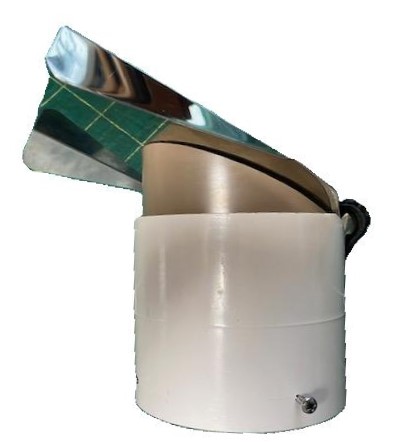


Water layer experiment image: You can see that the white lines are pointing in a certain direction.
↓
Improved valve: YouTube video



For telephone advice regarding installation and use, please contact Fujimoto at +81-80-4365-0861

